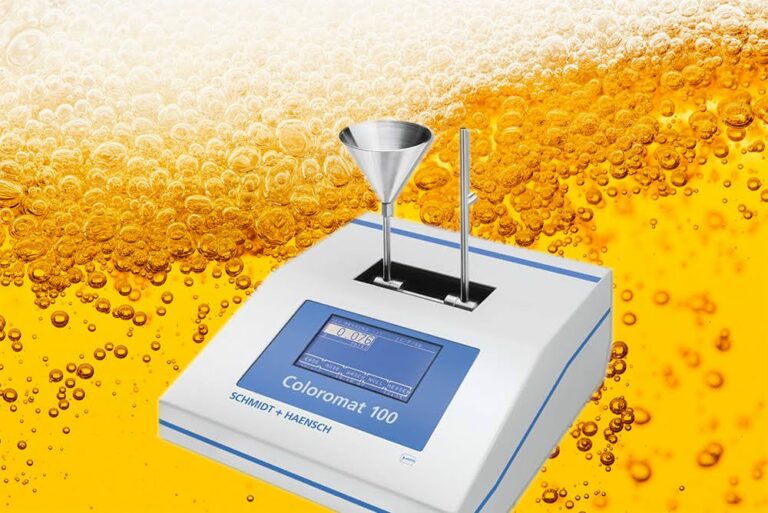Educational
What is spectrophotometry and colorimetry?
Measuring visible light units
SCHMIDT + HAENSCH’s instruments such as the Coloromat 100 and Saccharoflex are able to measure the light absorption of liquids. It is a great method to analyze not only samples of chemical substances but also to objectively and repeatedly verify colors of beverages, cosmetics and even pharmaceuticals.
The basic principle is that each compound absorbs or transmits light with a specific wavelength. With Beer-Lambert’s law the absorption can be converted into a concentration. Both colorimeter and spectrophotometer are the instruments used to measure the light-absorbing properties of substances. However, the two are differentiated in a way that a colorimeter measures the concentration of solute in any given solution by determining the absorbance of a specific wavelength of light passing through the solution. As against, a spectrophotometer measures the transmittance or reflectance of light by passing it through a sample solution.

A quantitative method for measuring the amount of a known chemical substance
Every chemical compound absorbs, transmits, or reflects light (electromagnetic radiation) in a certain wavelength range. Spectrophotometry is used to measure how much a chemical substance absorbs or transmits. Spectrophotometry is used in various fields (e.g. chemistry, physics, biology, biochemistry, materials and process engineering, clinical applications, industrial applications, etc.) Any application dealing with chemical substances or materials can use this technique.
In visible spectrophotometry, the absorption or the transmission of a certain substance can be determined by the color of the observed light. For example, a solution that absorbs light in all visible regions (i.e., does not transmit any of the visible wavelengths) theoretically appears black. On the other hand, if all visible wavelengths are transmitted (i.e., absorbs nothing), the solution sample appears white. If a solution sample absorbs red light (~700 nm), it appears green because green is the complementary color of red. Visible spectrophotometers, in practice, use LED’s and optical bandpass filters to narrow down a certain range of wavelength (to filter out other wavelengths) so that a particular wavelength of light is passed through a solution sample.
Colorimetry: reflectance color at a specific wavelength
SCHMIDT + HAENSCH offers the reflectance meter Saccharoflex® which is especially used within the sugar industry. The reflectance color measurement is designed to determine the reflectance whiteness of sugar crystals. The sugar crystal color is an important factor in the EU-wide required standard of sugar. Determination of the degree of whiteness in sugar crystals is a complex measurement. The whiteness depends not only on the color but also on the size and shape of the crystal. Therefore, the Saccharoflex® is a unique device which allows you to determine the sugar reflectance color according to ICUMSA Braunschweig standards.
Do you have any questions?
We will be happy to help you
